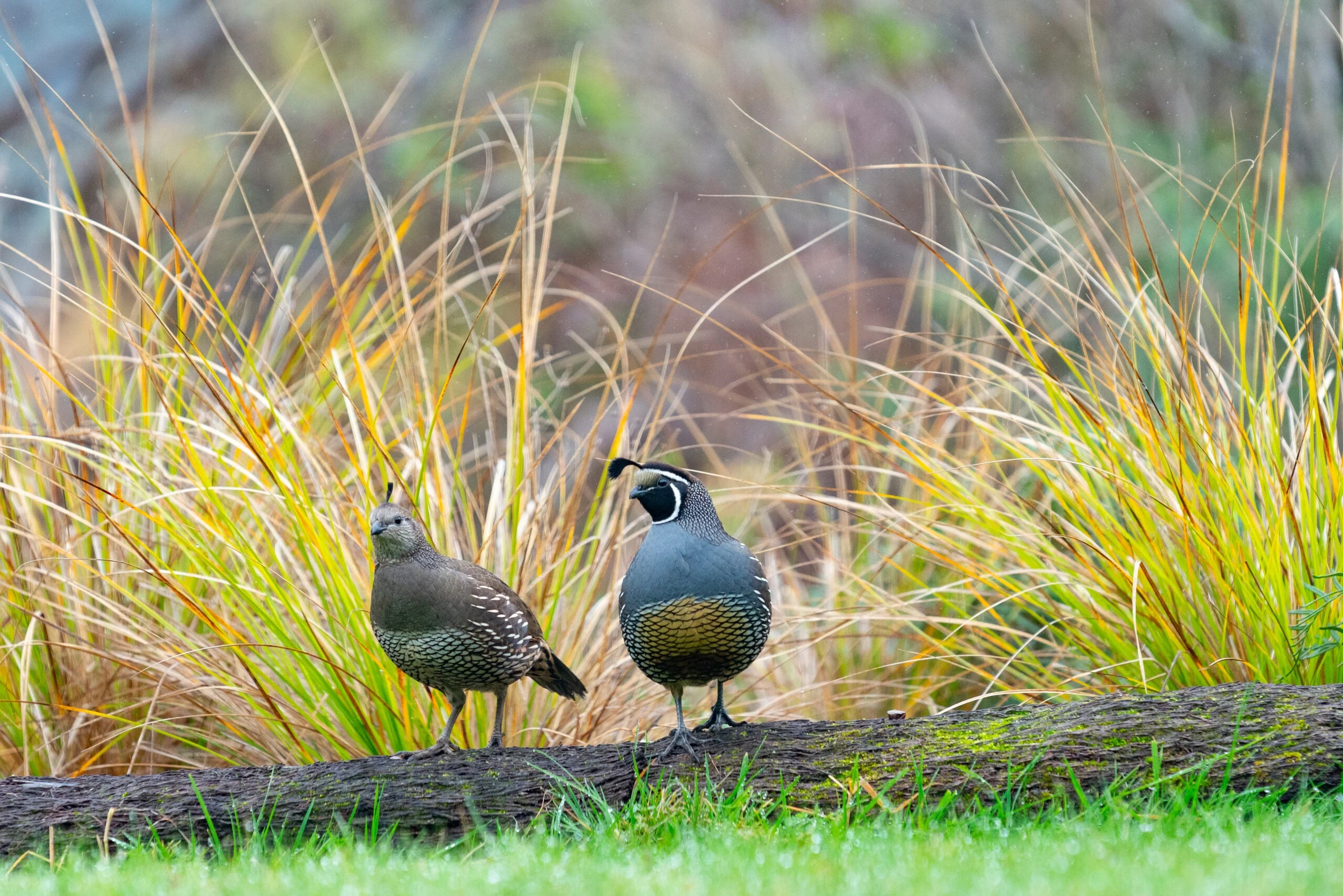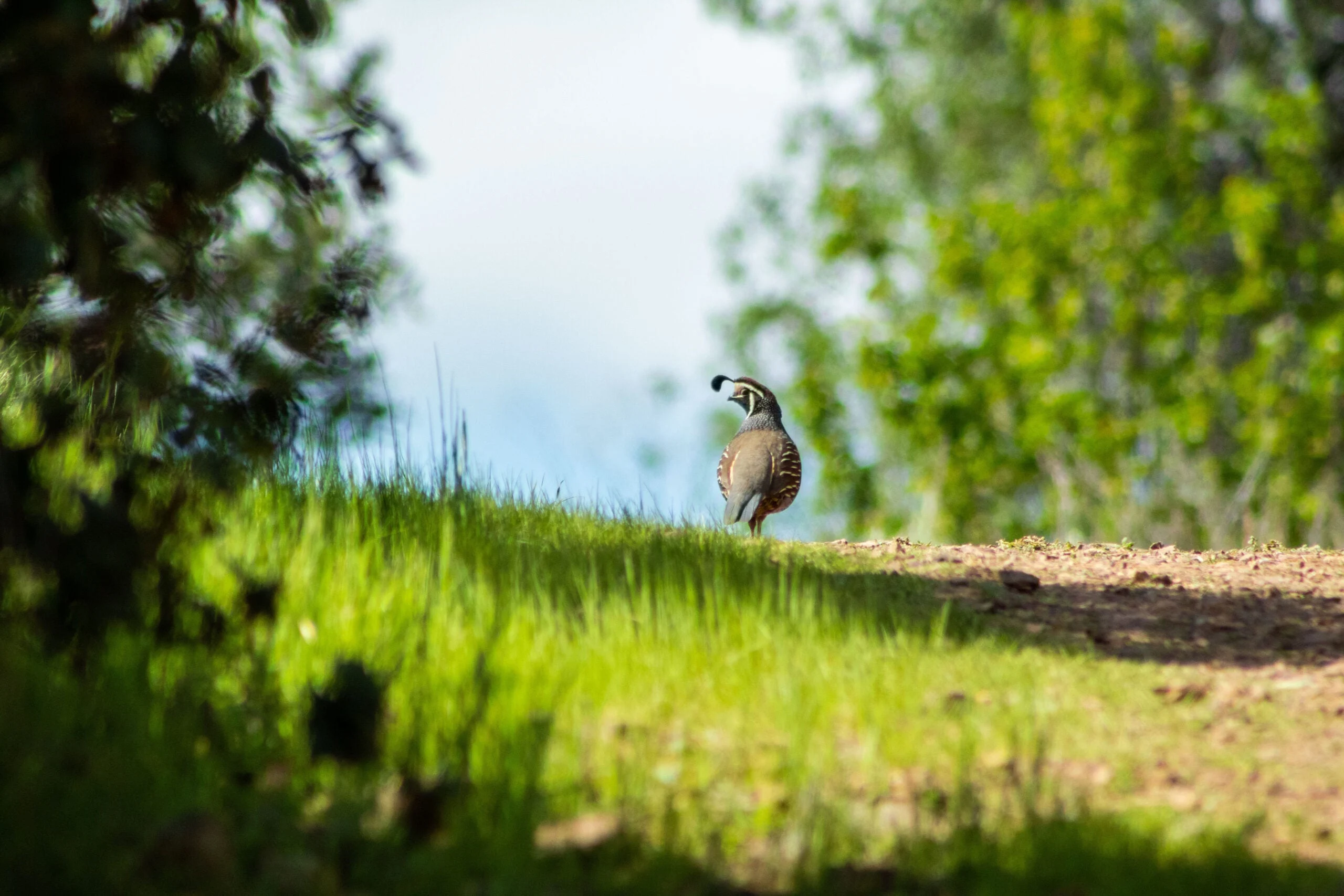With its distinctive topknot, the California or Valley quail looks more like a fanciful partridge in a pear tree than it does a real bird, but it is real. It’s also thriving and, unlike most other upland gamebirds
, even growing in population. Part of its success lies in the fact that the California quail is highly adaptable to a variety of habitats. These little birds have a distinctive call and a high tolerance for people. They are a common presence in many Californian’s lives and even a sight at backyard bird feeders.
The California quail is also a popular and tasty gamebird, pursued throughout its range in the far western U.S. It is a coveying bird, so if you find one, you usually find more. They bob their heads while walking as if weighted down by the feathery topknot hanging over their beak. The males feature an impressive display of colors and feathers while offering hunters some fun on the wing. Here is everything else you need to know to identify, find, and hunt the California quail.

A female California quail on the left and a male California quail on the right. Brian Scantlebury/Adobe Stock
Appearance, Range, and Habitat
Both male and female California quail wear distinctive topknots and scaled bellies. The male’s coloring is bluish-gray, with white-barred russet sides. The hens also have white bars but wear theirs over a coat of gray and brown. They are plump, short-necked, and have small beaks made for pecking small seeds. They weigh 6-9 ounces.
Despite what should be distinctive looks, with a topknot worn by both sexes and blue-gray coloring on the male, the California quail can be confused with the Gambel’s quail. The Gambel’s not only looks similar, but its desert range butts up against the southeastern portion of the California quail’s home range. Both species have topknots and barred sides. The Gambel’s quail lacks the scaled belly feathers of the California quail, and the male Gambel’s has a distinctly russet crown, while the male California quail’s crest is dark brown. California quail can also be distinguished from others by their three-note call that (sort of) sounds like “Chi-ca-go” with an emphasis on the second syllable.
The California quail lives in California, hence the name. It’s found in virtually every part of the state except the mountains. Its range extends outside of California, too: south throughout the Baja Peninsula and north in Washington, Oregon, and parts of northern Idaho. It’s also found in parts of Nevada. In terms of habitat, it’s a bird of scrubland, well adapted to coastal climates and very arid zones. It can live in suburban areas, and even parks, but can also be found in classic California oak and chaparral, coastal sage scrub, pinyon-juniper woods, grasslands and even semi-desert habitats. Their diet is mainly seeds, although they will also feed on invertebrates. California quail forage on the ground during the day and roost in trees at night. Coveys can grow to 70 birds in fall and winter.
Breeding Behaviors
Males display by dropping their wings and spreading their tails. Sometimes, they run at the female they are trying to impress. Once paired, the male and female will whistle a sort of duet. Females dig a nest in the ground, hidden by grasses or by the base of a tree. In some cases, they have been known to build nests in trees in broken branches or similar spots. The females lay 12-16 eggs and sometimes will “nest-dump” laying in other bird’s nests so that broods can be quite large. They will hatch one to two broods per year. The young can leave the nest within a day of hatching.

The male California quail is easily identified by the curved topknot and bluish-gray chest. Robert/Adobe Stock
California Quail Conservation and Threats
With the exception of some development along coastal areas that deprives California quail of habitat, they are adaptable birds with slightly increasing populations
. They have also been successfully introduced outside their native range. Wildfires, which have become common in California, can benefit quail by regenerating scrubland.
California Quail Hunting
California quail remain a very popular gamebird, with an estimated annual harvest of around a million birds in California alone. Seasons are also open in Oregon, Washington, Idaho, and Nevada. Quail live in a variety of habitats, and the terrain can range from flat to quite rugged. California quail always want brush to hide in, such as chokecherries, brambles, red whip, chapparal, sagebrush, Russian olive, and Russian thistle. While they will step out of cover to feed on seeds and grasses, they will rarely stray far from a good hiding place.
That means hunting California quails requires busting brush. Many hunters go dogless, walking through the thickets themselves, pausing occasionally to unnerve quail that sit very tight. Hunters will also listen for the calls of quail to help locate them. Dogs, either pointers or flushers, can do much of the dirty work for you, going into thickets to push birds out and then finding them after they fall. Flushing dogs have the advantage of pushing birds out of cover you may not want to walk into, while pointers will merely hold the bird until you walk in to flush it. Quail don’t fly far, and after you break up a covey, you can have good shooting on single birds.
Although birds can be skittish, shots are rarely long. An Improved Cylinder choke and smaller shot like 7 ½ is a good choice. California limits hunters to non-toxic ammunition, and steel 6 shot comes the closest to lead 7 ½.
All quail are delicious. It takes only a few minutes to pluck a bird for roasting or for splitting lengthwise and cooking in a skillet. Some hunters prefer to skin birds and cook the breasts and legs separately. Both are a treat.






